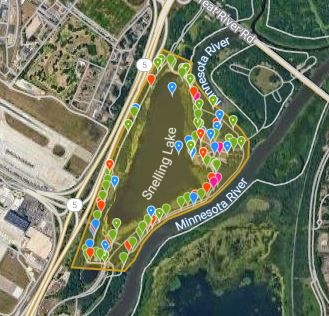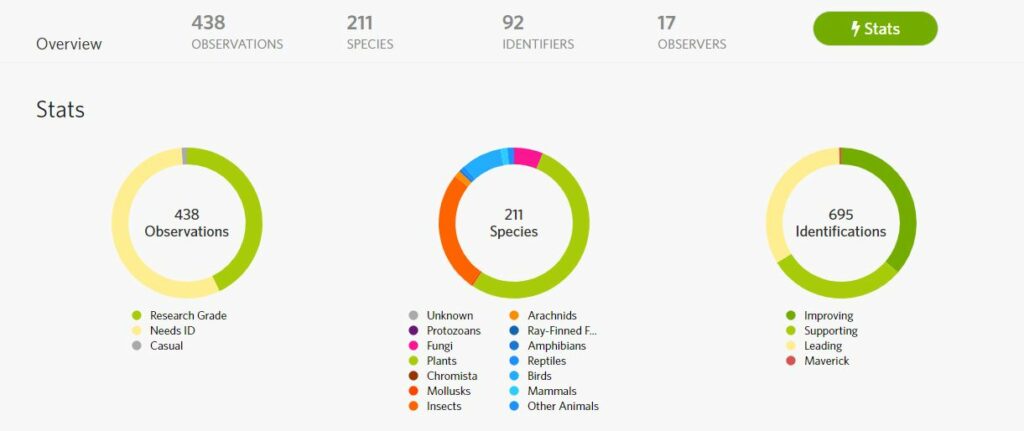BioBlitz!

By Clara Brown, Fort Snelling Visitor Services Specialist Individual Placement / AmeriCorps Member placed at Fort Snelling State Park, Minnesota Department of Natural Resources
A big part of conservation is understanding the world around you. Without that understanding you don’t know what needs to be protected and conserved. The role of science is to explore our world and expand our understanding, however, the natural world is vast and it would be difficult for scientists to discover everything alone. That’s where community science comes in.
Community science is a way for members of the public to help scientists conduct research projects. By having more eyes on nature and more feet on the ground, community science can collect important information about natural biodiversity.
Earlier this spring a librarian from Nokomis Library reached out to the Fort Snelling State Park naturalists and inquired about collaborating on a community science project. The goal of the project was to teach people about community science while also completing a community science project. Park naturalist Sarah Anderson and I started exploring different project possibilities and decided that a Bioblitz project powered by iNaturalist would be a good fit.
A Bioblitz is an event that focuses on finding and identifying as many species as possible in a specific area over a short period of time. This made the most sense to us because we could pick a specific area in the park and encourage people to come out on a specific day and learn with us! We had participated in Bioblitz projects before but we had never put one on ourselves. Our first step was to learn how.
In June we invited Fort Snelling State Park Volunteers to the park to test out how to set up and run a Bioblitz. I created a project on iNaturalist for the Bioblitz site and opened it for one hour. During that time the seven of us made 73 observations and identified 48 species! Everything went smoothly and our volunteers had some great suggestions about how to make it even better.
Our next step was to create a project for the public to participate in! Nokomis Library hosted an info session at the library itself and we planned the event to take place on August 12th. This Bioblitz was open to the public so anyone who made an iNaturalist observation inside our study area during park hours would be included in our project. We hosted an information session in the morning to teach people about community science and to show them how to use the app. From noon to 3:00 pm we had a tent set up at our beach area where park staff and volunteers answered questions about the project and set up participants. We also roamed the trail, talked to people, and made our own observations. Over the course of the day we had 17 observers, 438 observations, and 211 species identified! It was a blast to be able to teach people about community science and hopefully our data will be helpful in managing the ecosystem in the park and to show people what they can find if they come and visit.


Resources: